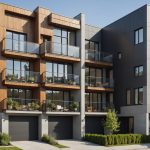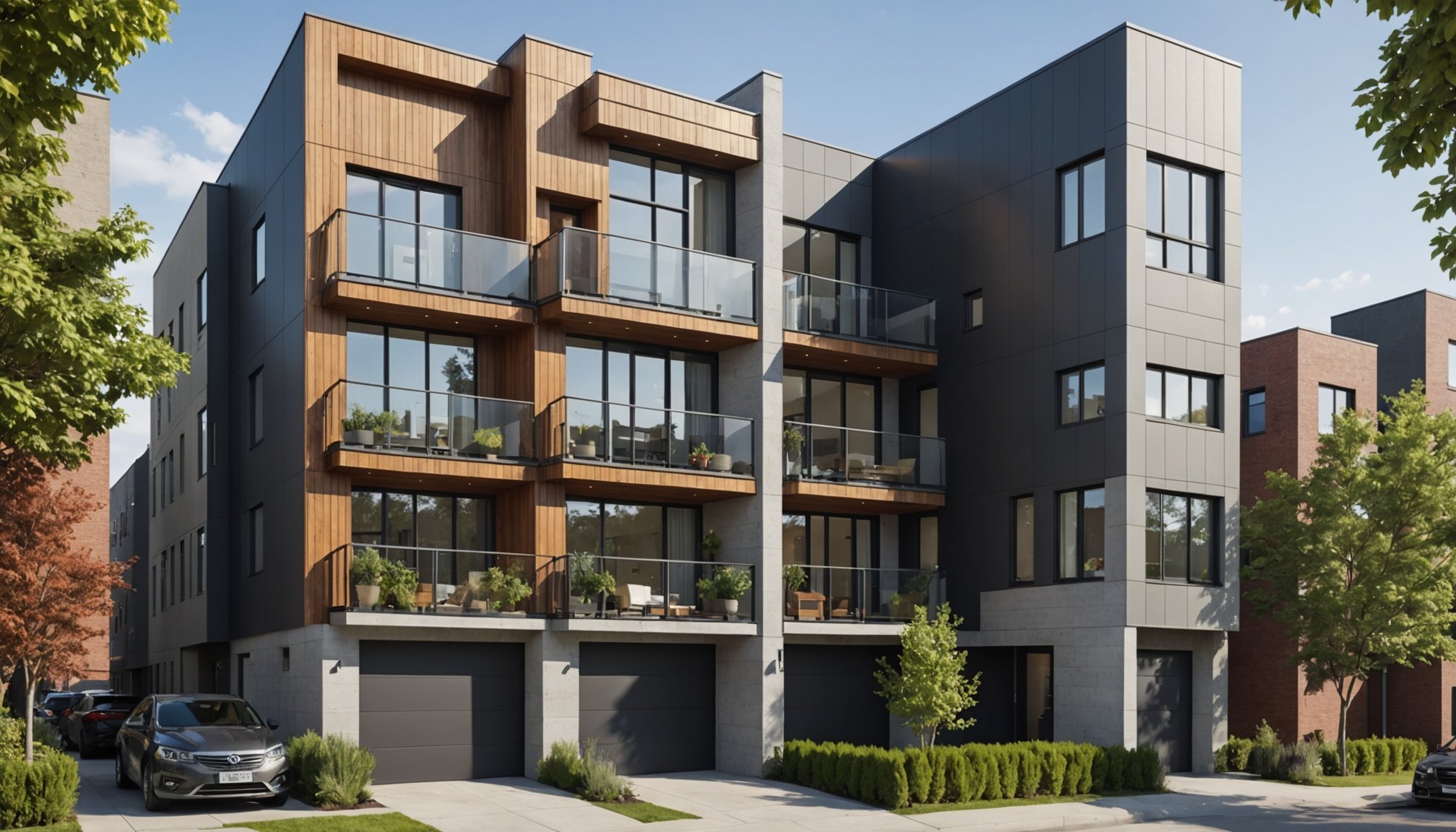Maximizing Space in Multi-Level Townhouses
In multi-level townhouses, space optimization is essential for creating a functional and comfortable living environment. Understanding the importance of vertical space utilization can transform such homes into efficient, stylish sanctuaries. By adopting vertical living strategies, homeowners can maximize every inch of space available.
One effective approach is to invest in innovative multifunctional furniture solutions. These clever designs serve dual purposes — like a bed that doubles as a workstation or a sofa that offers hidden storage. Multifunctional pieces not only conserve space but also enhance the overall aesthetic appeal of the home.
Also read : Thriving Indoor Tropical Gardens in the UK: Expert Tips for Creating a Lush Green Paradise All Year Round
Strategically placing storage to enhance accessibility is another critical aspect. Ensuring that frequently used items are within easy reach while seldom-used belongings are stored out of sight can significantly streamline daily routines. Vertical storage solutions, such as high shelves or hanging racks, efficiently utilize wall space, freeing up floor area for active use.
Additionally, consider incorporating storage solutions that blend seamlessly with the home’s design. For instance, built-in cabinets that mimic the wall color can create an illusion of expansive space while maintaining order and organization. With a thoughtful approach to space optimization and vertical living, multi-level townhouses can be transformed into serene and spacious homes.
Also to discover : Optimizing Shared Bedrooms: Innovative Space-Saving Ideas for Families with Multiple Children
Interior Design Strategies for Multi-Level Living
In crafting multi-level townhouses, thoughtful interior design is crucial in achieving not only functionality but also aesthetic appeal. Through color schemes and lighting techniques, homeowners can create a sense of spaciousness and coherence.
Color Schemes and Lighting Techniques
Using lighter colors such as whites or pastels can amplify natural light, making spaces appear larger. Contrast these shades with brighter accents to add personality without overwhelming the space. Lighting plays a vital role – opt for large windows or skylights to maximize natural light, reducing reliance on artificial sources during the day.
Open vs. Closed Floor Plans
Choosing between open and closed floor plans affects the flow and function of a home. Open plans can unify spaces, creating a more inclusive environment that encourages interaction and movement. In contrast, closed plans offer privacy and specific designated areas suited for quiet activities or workspaces. Evaluate family needs to determine which layout enhances daily life best.
Using Mirrors to Enhance Space
Mirrors reflect light and give the illusion of depth, a perfect trick to make areas feel expansive. Position mirrors opposite windows or light sources to further amplify brightness and depth. Innovative placements, such as mirrored backsplashes or doors, can subtly integrate reflection into your design.
Creative Storage Solutions
In multi-level townhouses, creative storage solutions are vital for maintaining organization and maximizing living space. Vertical shelving systems provide a smart way to capitalize on wall space, offering opportunities for both storage and display. By installing floor-to-ceiling shelves, homeowners can store items without sacrificing floor area, making rooms feel larger. These systems are particularly effective in living rooms or kitchens, where accessibility and visibility are key.
Under-stair storage possibilities present another inventive approach. This often-overlooked space can be transformed into drawers, cabinets, or even a cosy reading nook, adding functionality without clutter. By customising these underutilized areas, homes can gain much-needed storage without affecting aesthetics.
Furthermore, innovative closet designs can significantly boost storage efficiency. Consider solutions such as telescoping racks, modular inserts, or sliding doors that economize space while keeping clothes and accessories easily accessible. These design strategies help maintain a neat and orderly home environment, crucial for efficient multi-level living.
By incorporating these creative storage ideas, multi-level townhouses not only become more organized but also more aesthetically appealing. Adopting such strategies ensures that every square foot is utilized effectively, contributing to a clutter-free, harmonious living space.
Layout Suggestions for Better Functionality
Maximizing the potential of layout design in multi-level townhouses means creating spaces that are not only aesthetically pleasing but also highly functional. Prioritizing flow optimization ensures every area works harmoniously with others, resulting in a seamless living experience.
Zones for Different Activities
Organizing distinct zones for living, working, and relaxing clarifies the purpose of each space. This strategy can assist in smoothly transitioning between activities. For example, a dedicated workspace minimizes distractions, while a distinct relaxation zone increases comfort and leisure.
Connecting Indoor and Outdoor Spaces
Enhancing the connection between indoor and outdoor areas increases usability and appeal. Opening walls with large glass doors or incorporating patios can make an indoor space feel more expansive and inviting. This design choice also encourages more natural light, bolstering the aesthetic and sensory appeal of the home.
Vertical Gardens and Indoor Plant Arrangements
Bringing nature indoors through vertical gardens or cleverly arranged potted plants fosters a sense of tranquility and wellness. These green elements not only beautify environments but can also improve air quality and encourage a feeling of serenity among family members. Integrating these natural features into a townhouse design can profoundly impact the emotional and physical ambiance of the space.
Case Studies of Successful Multi-Level Townhouse Designs
Exploring real-life applications of design reveals how thoughtful planning transforms townhouses into functional masterpieces. By examining case studies, we observe innovative space usage and circular solutions in urban settings where every square foot counts. Designers share insights on addressing challenges unique to multi-level living.
In bustling cities, integrating vertical living strategies proves vital. One commendable example showcases a historic townhouse renovation where space optimization met sustainability. Emphasizing vertical space utilization, the designer installed floor-to-ceiling shelving and multifunctional furniture to preserve room integrity while maintaining style.
Another urban gem featured in case studies effectively blends indoor and outdoor spaces. By introducing expansive balcony doors, the residence achieves seamless flow and maximizes natural light, enhancing its aesthetic appeal and connectivity.
Lessons learned from these innovative projects highlight the importance of strategic space allocation. Thoughtful room zoning not only facilitates diverse activities but also optimizes daily living. It’s evident that functionalities improve significantly by customizing storage to each homeowner’s unique needs.
Through these examples, it’s clear that successful townhouse transformations rely on clever design stories. Engaging with such real-life scenarios, homeowners are equipped to explore possibilities, drawing inspiration for their interiors inspired by these designs.
Visual Inspiration and Concept Implementation
In the realm of designing multi-level townhouses, embracing a visual approach with design ideas can profoundly influence the eventual outcome. This section explores various ways to showcase inspiring interiors through engaging mediums, providing a glimpse into potential transformations.
Photo Galleries of Innovative Designs
Photo galleries serve as a treasure trove of visuals for homeowners seeking design inspiration. They offer a compiled glimpse into a multitude of creative, multi-level townhouse interiors. By highlighting diverse structural and decor solutions, these galleries spark the imagination, showcasing potential layout adaptations, unique aesthetic directions, and successful space optimization strategies.
Diagrams to Illustrate Layout Concepts
Utilizing diagrams can enhance understanding of spatial relationships by clearly illustrating layout design concepts. Such visual tools effectively communicate how different areas interact within a space, simplifying the complexity of flow optimization. For homeowners, these diagrams can inform planning stages, aiding in the precise execution of their envisioned projects.
DIY Ideas for Personal Touches
For those seeking a personalised touch, DIY projects can transform spaces into true reflections of individual style. Embarking on these creative endeavors allows homeowners to integrate bespoke elements, infusing design ideas that resonate with their preferences. From customized artwork to repurposed furniture, DIY projects encourage hands-on involvement in the design process, adding both personality and uniqueness.





